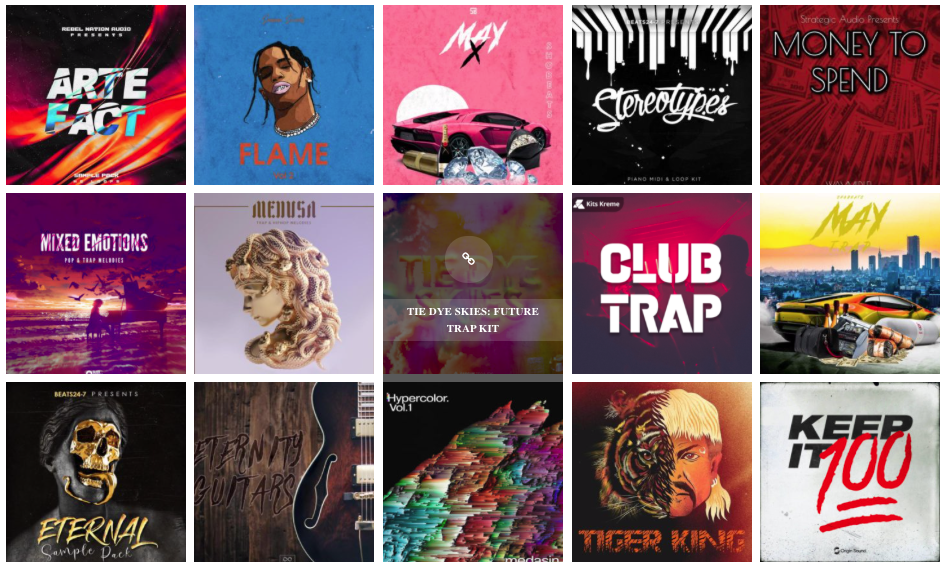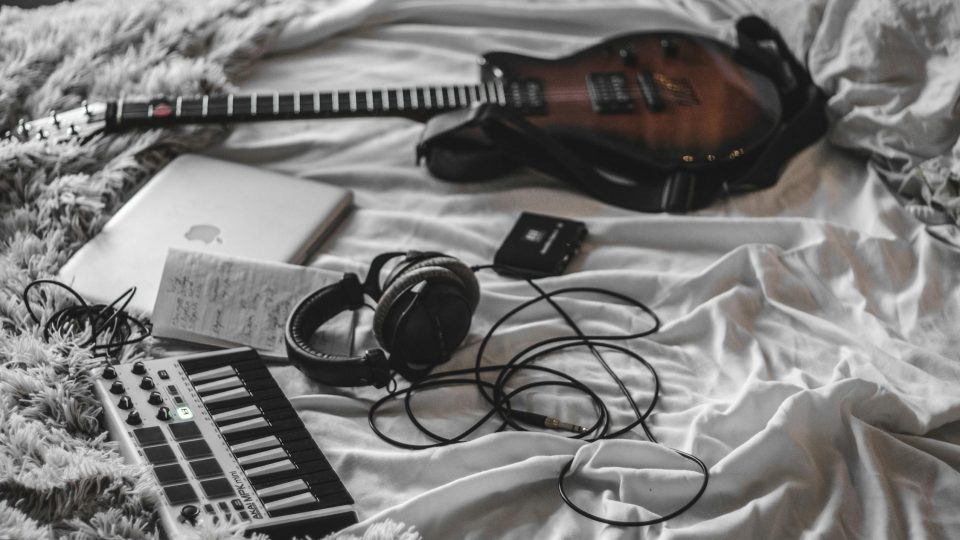How to Make Trap Beats Pt.2- Trap Melodies
In Part 1 of our guide to making Trap beats, we explored the foundation of Trap—The Drums. In Part 2, we shift our focus to Trap melodies, which are equally essential for shaping the mood and atmosphere of a track. We’ll not only explore the musical styles commonly used in Trap but also dive into the various approaches for adding melody and melodic content. So boot up your DAW because we’re going in!
Musical Styles and Moods in Trap
While it’s the drums and bass in Trap that define its identity, it’s the melodic content where things can get really interesting. While certain musical styles and moods are prevalent in Trap, the beauty of the genre lies in its versatility. Virtually any sample or instrument can be used. The foundational anchor provided by the drums creates a unique freedom for crafting melodic elements, allowing producers the freedom to experiment and innovate.
While there are no hard and fast melodic rules, one of the most prevalent themes in Trap is a dark, sinister sound. This aligns and seamlessly compliments the genre’s often violent lyrical content. Many samples and melodies feature sparse, brooding arrangements in minor keys. Typically, these melodies are simple and characterized by long, pad-like tones, contributing to the overall atmosphere. Plucks, Arpeggios, bells, stabs and synth sounds also feature heavily in the trap melodic tool kit.
Other popular musical influences and sample sources used in Trap include old deep soul, world music, tropical flavours, Melancholy Emo, Cinematic and Classical.
Regardless of the musical style, Trap melodies typically focus on simple, repetitive structures. The signature 808 bass lines that generally accompany the main melody are often complex, making it essential to keep the main melodies straightforward. This simplicity ensures that the beat remains impactful without overwhelming the listener with complexity.
Adding Melody
OK, so you’ve fully absorbed Part 1 of our how-to-make trap beats and have cooked up some drums that knock! Now, it’s time to add melody. And just as Trap encompasses a wide range of musical styles, there are also numerous ways of adding melodic content. Let’s take a look at some of the main methods.
Sample Loops:
Using pre-made loops is a quick and effective way to introduce melody into your Trap beat. Luckily you will not be short of options as the market for royalty-free trap-inspired samples is massive. Here on RouteNote Create Trap samples represent a sizable percentage of our expansive offering. The benefit of using samples is that you can browse a wide variety until inspiration strikes. A melodic sample will give you a clear indication of the direction your beat is going, guiding your creative process.
When searching for samples it’s advisable to look for samples that are part of sample construction kits. These samples are often broken down into their separate components. So a 4 bar melodic loop may include the bassline, keys, strings, arps, plucks, pads etc. This will give you far more scope with your arrangement as you will be able to bring elements in and out.
As far as composing using samples in your DAW a loop-based workflow is very straightforward. You just need to make sure that the tempo of the sample matches that of your session. Also make sure you have snap-to-grid turned on and as long as the samples are perfectly trimmed you will be able to drag them straight into your session where they should line up perfectly with your drums. Use copy and paste to loop the sample and create additional tracks if you are using a construction kit with different sample elements. Once you’ve imported your loops into your session, you can freely move, edit, and manipulate them to fit your track.

Sample Chopping
Sample chopping is taking sampling to the next level. It’s about applying your own personal spin on a sampled sound or melody. This technique involves slicing up a sample loop and rearranging the pieces to create new melodic structures. The practice of sample chopping was pioneered by Hip-Hop producers such as DJ Premier and Pete Rock during the 90s. These techniques, when applied to trap beats can sound awesome and can really set you apart as a beatmaker. While sample chopping is particularly prevalent in the sampling of old soul records it can be applied to most melodic samples.
There are various different ways in which you can chop up a sample. You can directly edit the audio in your DAW and move the edited audio slices manually. A more intuitive approach is to use a dedicated software sampler such as Logic Pros’s Quick sampler or Abletons Simpler sampler. For a detailed breakdown of sample chopping techniques in Ableton check the video below.
MIDI Composition with VSTs:
Crafting your own melody from scratch gives you complete control over the mood and style of the beat. Original compositions are the ultimate way of translating your signature sound and style to your beats. You dont have to be a musical prodigy to compose your own melodies. As Trap melodies tend to be relatively uncomplex in nature there is no reason why you can’t lay down some tasty keys. Trap melodies are as much about the sounds and textures as the actual melodies and chords. Using VSTs like Serum or Omnisphere make composition easier by offering endless sound possibilities. Everything from simple bell arpeggios to rich synth layers, Orchestral stabs to Horror Hammond organs .
For Trap melodies, producers tend to stick with minor scales. These provide the melencholy, dark undertones typical of the trap genre. Most DAWs feature scale functions that allow you to select a scale and you can then only play the keys within that scale. This feature makes composition for those with limited music theory knowlage a lot easier.
Another method if you are struggling for inspiration is to use a midi chord pack or midi auto composition software. Some fantastic examples are Scaler 2, Captain Chords and EZKeys 2.
And once you have laid down some traptastic melodic content its easy to now experiment with different presets and settings. It is always recomended that you duplicate your midi tracks before you start messing with different sounds and settings. That way you don’t risk loosing your original idea(s).
And finally once you have a number of different sonic variations why not try stacking them on top of each other to create rich original layers. With MIDI composition you really are free to take your melodies wherever you wish.
Pre-Prepared MIDI Files:
Pre-made MIDI files are another valuable resource when it comes to adding melodic content to trap beats. These files come with all the notes and structure laid out. Simply assign a VST instrument to your track and you’re away. Sample packs often come bundled with the associated MIDI files while other sites offer genre specific MIDI packs. These files give you instant professional-grade chords and melodies with minimal effort.
After inserting a MIDI file into your project, you can adjust the timing, change the key or scale, or rearrange the notes to suit your track. This method is ideal for beginners looking to learn or producers aiming for a fast workflow.
Live Instrumentation:
While the use of live instruments in Trap production is rare if used effectively it can elevate a track. Live guitar is a particularily popular instrument choice in trap. An acoustic or electric guitar arpeggio can help bring an organic feel to a beat. This is very effective as it contrasts with the mechanical nature of digital sounds. Artists like Post Malone and Young Thug have used live instrumentation in their tracks, blending Trap beats with real instruments to create a more hybrid sound.
You can record directly into your DAW and then chop up and edit the audio in order to get the best takes. The use of post production techniques and effects like reverb or distortion help the live instruments integrate smoothly with the rest of the beat.

Adding Texture and Effects
Once you have your melodic elements in place, adding texture and effects can bring depth and character to your beats. Trap melodies thrive on atmosphere. Adding the right effects can transform a simple melody into something more immersive and atmospheric. Reverb, for instance, is essential in Trap. It creates a sense of space, giving melodies a haunting, distant quality. Perfect if you’re aiming for a dreamy or otherworldly sound.
Another effect common to trap is distortion. The right amount can take a basic melody and make it more aggressive or gritty, which is great for harder Trap beats. By adding distortion to synths or 808s, you can emphasize harmonics and give the sound a rougher edge. A slight touch of saturation can also warm up melodies, making them feel richer and more analog in nature. This offers a particularly effective contrast against the often brittle harsh digital snap of the drums.
Summary
In Trap production, melodies are crucial for creating the mood and atmosphere of the track. While trap drums tend to conform to fairly strict guidelines there is a lot more freedom when it comes to the melodic content. This is the area in which you can express your unique musical vision and express your signature style. Whether you choose to use samples or compose original melodies there are no limits to where you can take your trap productions.
Remember – RouteNote Create subscriptions start from as little as $2.99. You also get 10 FREE credits to spend on samples along with access to our FREE sample pack bundle when you sign-up!
